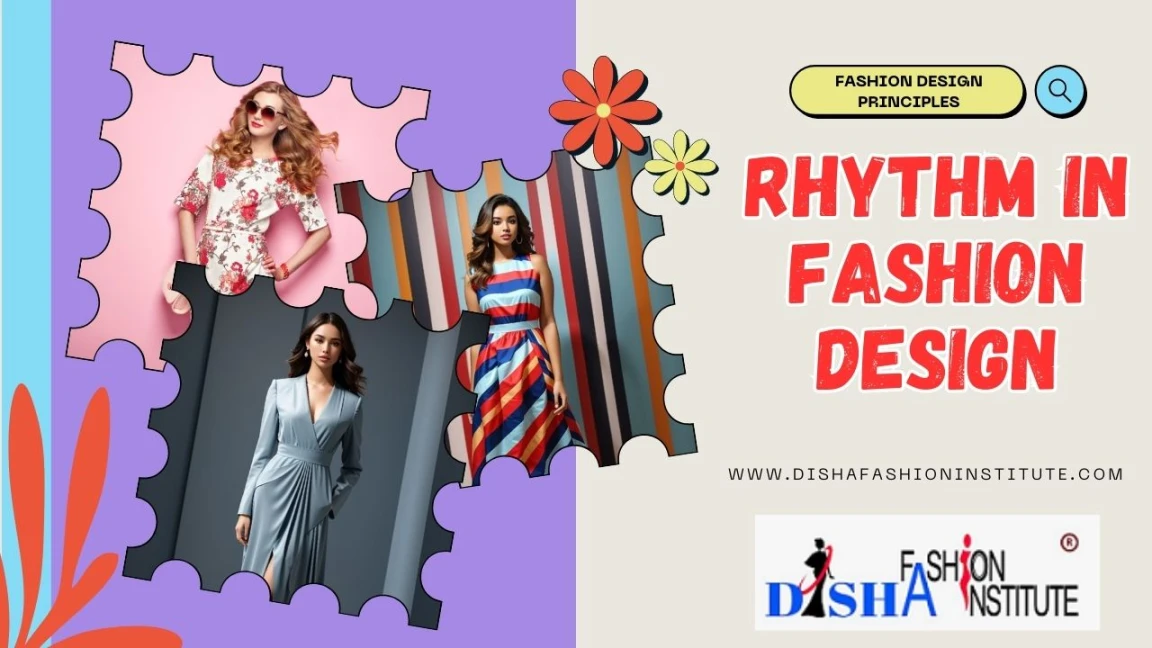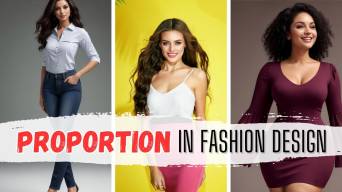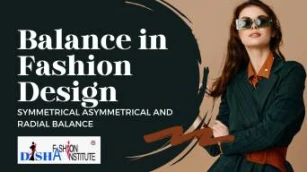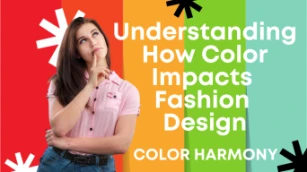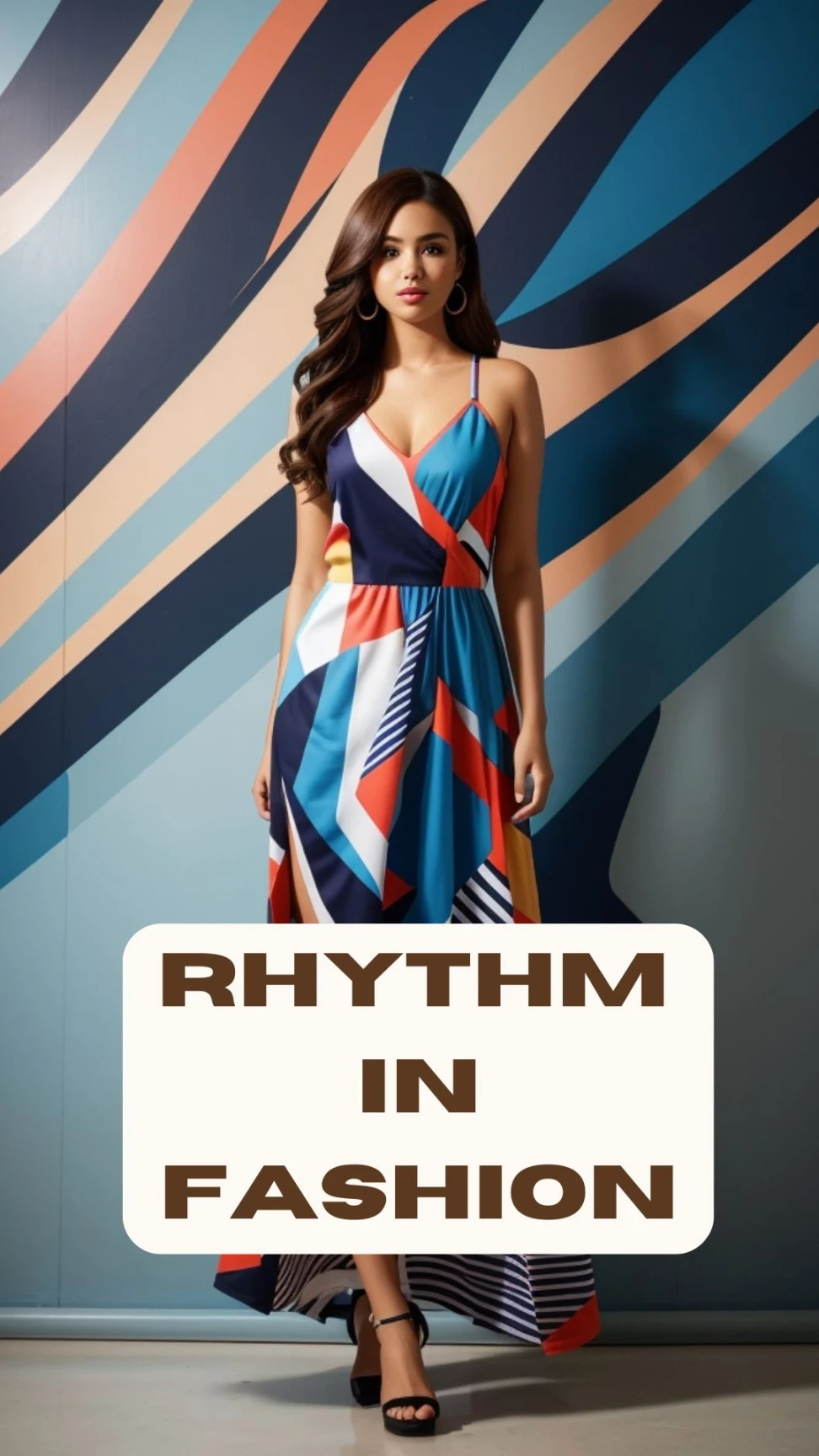
In this blog post, we untangle the captivating world of rhythm in fashion design. Join us as we explore how designers harness this artistry to captivate hearts, guide gazes, and evoke emotions through the rhythmic symphony of fabrics and style. Step into a world where fashion becomes a mesmerizing performance of elegance and grace.
Table of Content
What is Rhythm in Fashion Design?
One of the basic principles of design rhythm in fashion refers to the deliberate flow of lines, shapes, textures, and colours within a garment. This rhythmic flow guides the viewer's gaze smoothly from one area of the outfit to another, creating a harmonious and visually engaging experience. When all the elements of an outfit work cohesively together, a sense of rhythm becomes evident, enhancing the overall aesthetic appeal.
The use of rhythm in fashion design is a crucial aspect of achieving pleasing and captivating effects in fashion design. This design principle involves the repetition of lines and masses, which can be uniform in size or exhibit a deliberate variation in size, either decreasing or increasing. For example, rhythmic patterns can be generated by superimposing scales, producing a compelling visual effect.
The power of rhythm in fashion design lies in its ability to create impact through the repetition of regular features, and motifs on printed fabrics, or even through subtle changes in size or colour. The below picture demonstrates the rhythmic effect, showcasing a repeating diagonal pattern in the dress.
When the lines and patterns are thoughtfully placed, the rhythm becomes a guiding force, leading the eyes from one design element to another. This seamless transition enhances the overall appeal and balance of the garment. Essentially, "rhythm" as a design technique can be achieved through a myriad of creative methods, each contributing to the harmonious flow and dynamic allure of fashion design.
Types of Rhythm in Fashion Design
Rhythm can be achieved through various techniques, such as
- Rhythm by Repetition
- Rhythm by Alternation
- Rhythm by Gradation
- Rhythm by Radiation
- Rhythm by Transition
#1 Rhythm by Repetition
Rhythm by repetition is the most basic way to create rhythm in fashion design. By repeating design elements such as colours, shapes, or textures, designers can create a sense of visual continuity and movement.
For example, from timeless polka dots to bold stripes, designers deftly employ repeating patterns to infuse garments with a sense of continuity and visual allure. A shirt with a repeated geometric pattern can create a sense of movement and flow. Alternatively, trousers with repeated ruffles create a sense of flow.
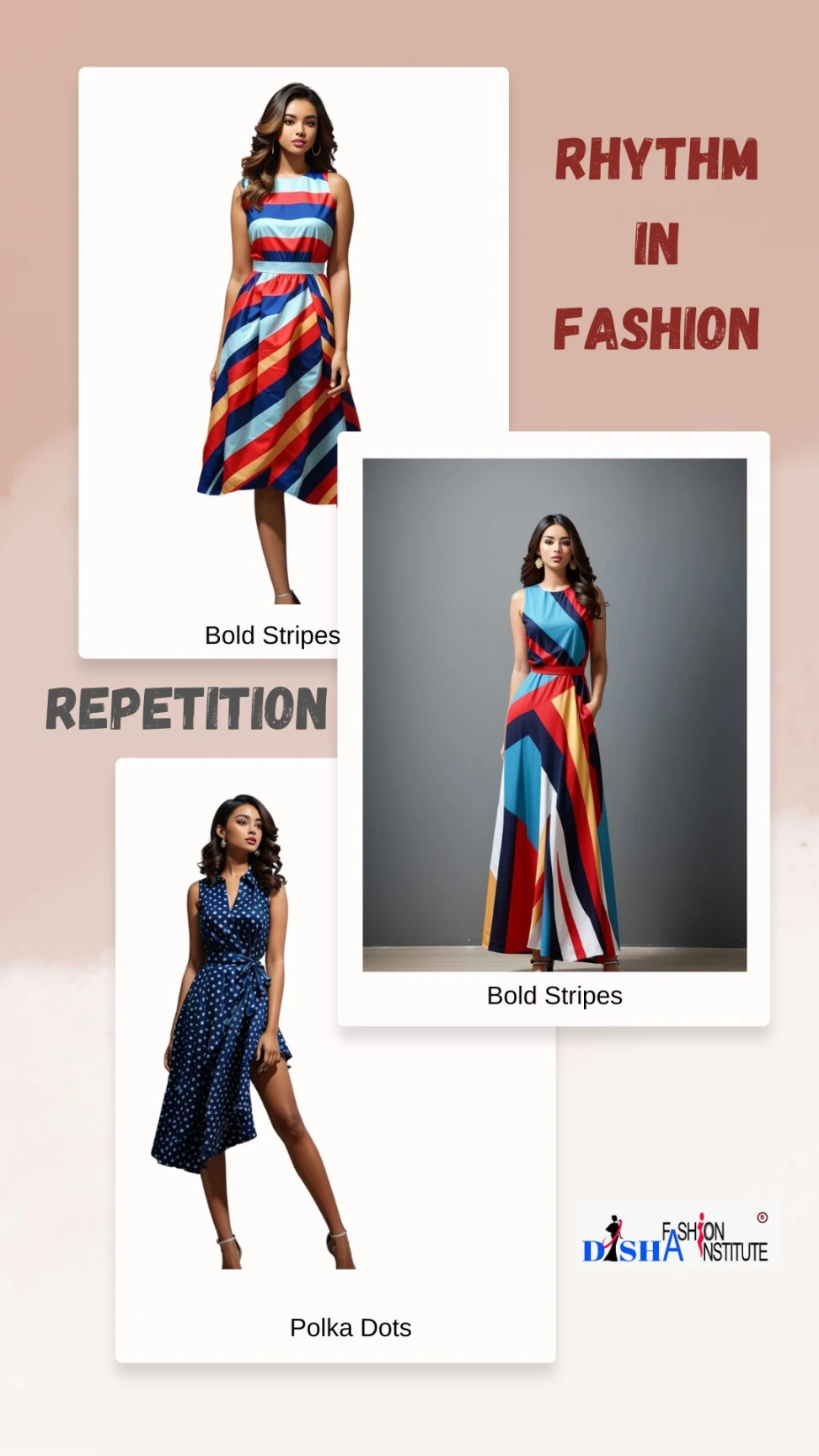
Repetition of floral motifs in various sizes and colours on a garment imparts a feminine, romantic, and cute feel to the design. In this case, a repetitive traditional motif is also alluring.

Often fashion brands use their logos in repetition as an all-over print on clothing or accessories, establishing brand identity and creating a visually recognizable style.
Garments with ribbed knits or Cable Knits, such as sweaters or socks, exhibit a repeated pattern of vertical raised lines that add texture and interest.
#2 Rhythm by Alternation
Rhythm by alternation is another way to create rhythm in fashion design. By alternating design elements, such as stripes or colours, designers can create a sense of visual interest and movement.
For example, alternating stripes of different colours can create a flow.
The gentle rise and fall of ocean waves, alternation infuses designs with dynamic energy that enchants the beholder.
Designers use colour blocking to juxtapose two or more solid colours in distinct blocks or sections, producing a bold and eye-catching alternation of hues.
They use alternating ruffles or frills on sleeves, collars, or hems to infuse a garment with playful movement and femininity.
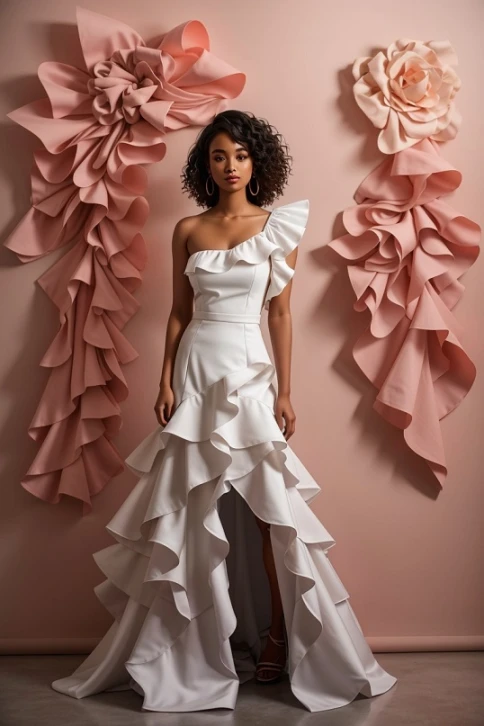
#3 Rhythm by Gradation
Rhythm by gradation in fashion is achieved when design elements change gradually in size, colour, or texture. Gradation can create a sense of visual interest and movement and add depth and dimension to a garment.
Here are some examples of rhythm by gradation in your garments
- Ombre, a popular technique in which colours gradually transition from light to dark or vice versa, creates a beautiful blending effect to bring a sensual appearance with a sense of movement and depth to the garment.
- Dresses with tiered layers, each slightly longer or shorter than the other, offer a gradation in length, creating an elegant and flowing look.
- Garments with dip-dyeing or tie-dyeing techniques show a gradual colour shift, resulting in a unique and artistic appearance.
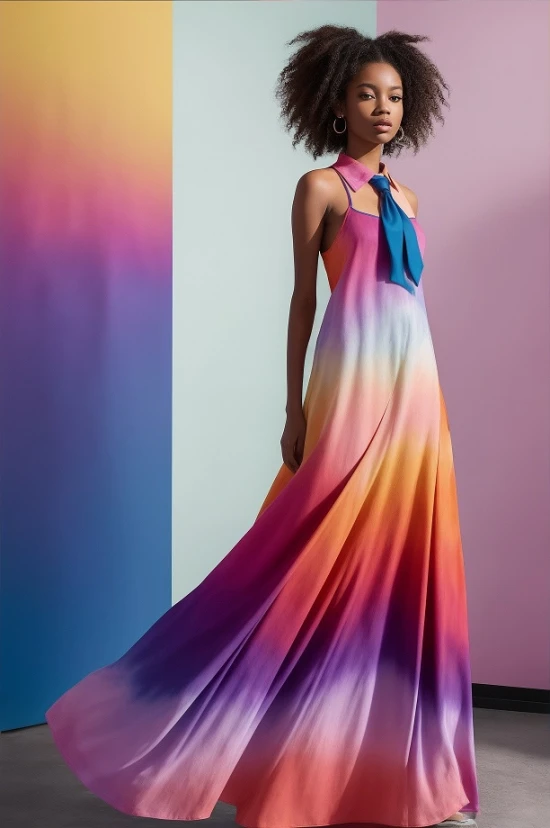
- Skirts or dresses with hemlines that gradually ascend or descend around the garment, providing a fluid and dynamic silhouette.
- Outfits with multiple layers of sheer fabrics of varying opacities create a subtle gradation of transparency and texture. This kind of layering is hugely used in making fantasy costumes.
- Sequined outfits with more densely packed sequins in some areas gradually disperse towards other parts, adding sparkle and visual interest.
#4 Rhythm by Radiation
Rhythm by radiation in fashion is achieved when design elements radiate out from a central or focal point, or the design elements are arranged in a radial pattern, creating a sense of visual movement and interest.
While radiation might not be as common as other design principles, some designers have used this technique to create unique and eye-catching garments. Here are a few examples of radiation in fashion design:
- Garments with pleats radiating from the centre create a sunburst effect, often seen in skirts or dresses.
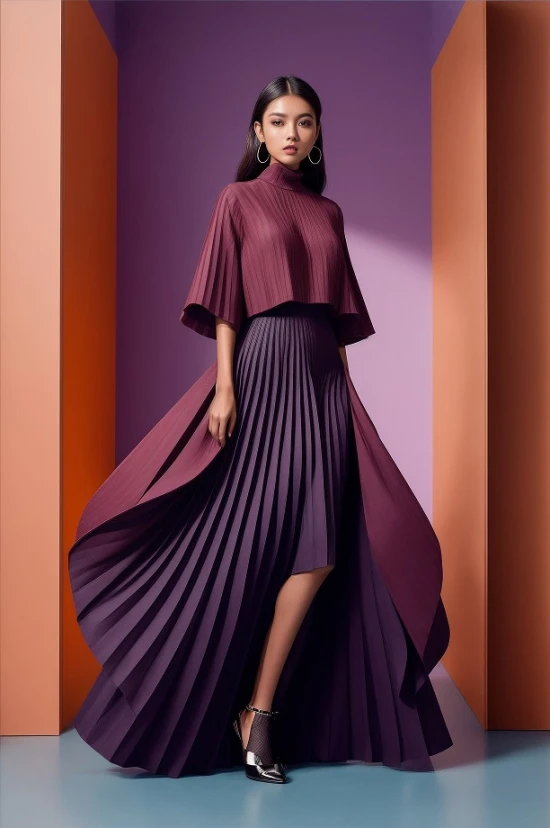
- Ruffles that form circular or radial patterns around the neckline or hem of a garment, resembling a beautiful flower or a halo effect, are a good example of radiation.
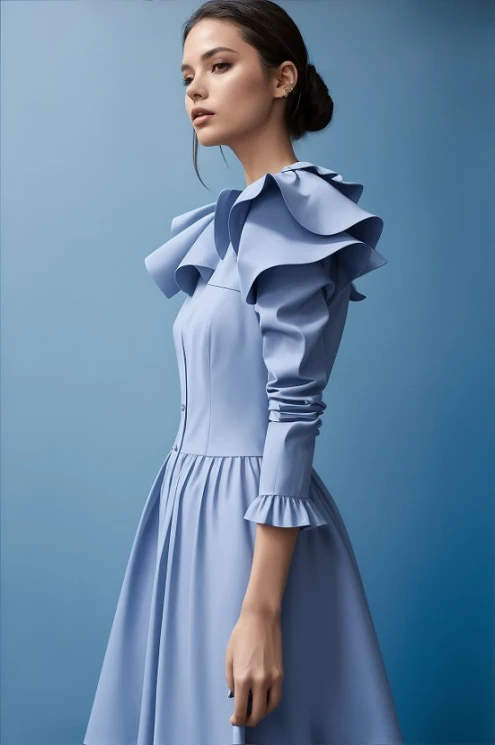
- Fabrics or prints with motifs arranged in a circular or starburst pattern add energy and movement to the design and create some illusion.
#5 Rhythm by Transition
Rhythm by transition in fashion creates smooth and gradual changes between elements, such as colours, textures, or silhouettes, to achieve harmony and flow within a garment.
Here are some examples of rhythm by transition in fashion design:
- Garments that transition seamlessly from one colour to another create a beautiful ombre effect or a smooth blend of hues.
- Outfits with sections of sheer fabric that gradually transition into solid material, adding a touch of mystery and allure.
- Dresses or skirts with hemlines that transition from short to long or vice versa, resulting in a fluid and dynamic silhouette.
- Dresses or tops with draped fabric that transition smoothly from one side to another create an elegant and flattering look.
- Innovative designs that can be transformed or adjusted smoothly to create different silhouettes or look on one garment.
Impact of Rhythm in Fashion Design on the Apparel Industry
The impact of rhythm in the apparel industry is significant and multifaceted. Rhythm, as a fundamental design principle, plays a crucial role in shaping trends, consumer preferences, and brand identity. Here are some key aspects of how rhythm influences the apparel industry:
Aesthetic Appeal
Fashion brands that effectively incorporate rhythm into their collections can stand out in a crowded market and attract a loyal customer base.
Trendsetting
Rhythmic elements often drive trends in the fashion industry. Designers who skillfully utilize repetition, alternation, and gradation can set new trends and influence the fashion direction for a particular season or year.
Brand Recognition
Establishing a recognizable rhythm in design can become part of a brand's identity. Consumers may associate specific rhythmic patterns or elements with a particular fashion brand, enhancing brand recognition and loyalty.
Timelessness
Certain rhythmic patterns and designs possess timeless appeal. By incorporating elements of rhythm into their designs, fashion brands can create garments that remain relevant and fashionable for an extended period.
Innovation and Creativity
Rhythm encourages designers to think creatively and experiment with patterns, textures, and colours. This approach fosters innovation and keeps the fashion industry vibrant and ever-evolving.
Runway Presentations
Rhythm adds flair and excitement to runway presentations, making fashion shows engaging and memorable for audiences.
Consumer Perception
Consumers often perceive well-crafted rhythmic designs as more sophisticated and higher in quality, positively impacting brand reputation and perceived value.
Market Demand
Fashion garments that exhibit rhythm are often in high demand, leading to increased sales and revenue for fashion brands.
Conclusion
The rhythm of fashion design is a captivating art form that orchestrates the visual symphony of garments. Through repetition, alternation, and gradation, designers infuse life into fabrics, creating a harmonious flow that captures the eye and evokes emotions. From trendsetting to brand recognition, rhythm influences every facet of the apparel industry, leaving an indelible mark on the runway and in the hearts of fashion enthusiasts. By Embracing the magic of rhythm, fashion design transcends mere clothing, becoming an expressive and mesmerizing medium of artistry.
All Topics on Principles of Design in Fashion
To explore all topics on principles of design in fashion, browse the list of blog posts below and click on the relevant heading to access the articles.
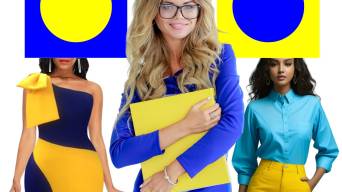
How to Contrast Colors for Clothing
How to Contrast Colors for Clothing | 8 Ways to Create Colour Contrast in Fashion
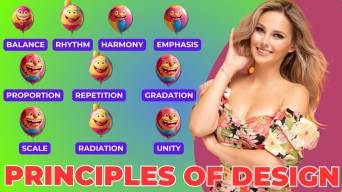
Principles of Design in Fashion
10 Principles of Design in Fashion You Need to Know to Become a Fashion Designer
All Topics on Elements of Design in Fashion
To delve into all the subjects about elements of design in fashion, simply navigate through the list of blog posts below. Click on the headings to access the articles you're interested in reading.
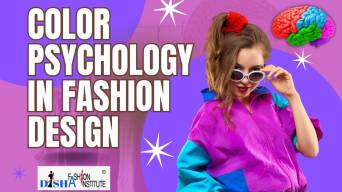
Color Psychology in Fashion Design
Impact of Color Psychology on Fashion Design: Exploring 12 Transformative Role of Color
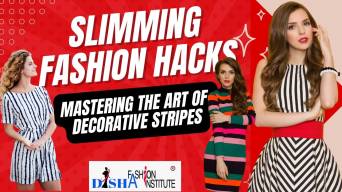
Elements of Design Line in Fashion
Elements of Design | Lines in Fashion | Creating Optical Illusions With Lines
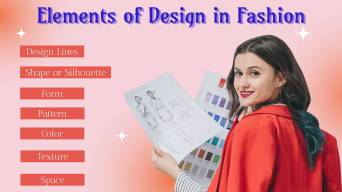
Elements of Design in Fashion
7 Elements of Design in Fashion You Must Understand as a Fashion Designer
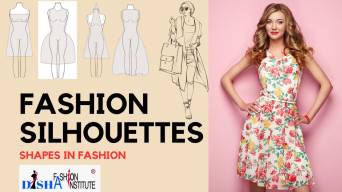
Types of Silhouettes in Fashion
Types of Silhouettes in Fashion | 12 Different Types of Fashion Silhouettes Explained
Explore Free Courses
Begin your fashion journey with our free fashion design foundation course. Dive into the world of style and creation today!
Fashion Designing Foundation Course
Join Fashion Designing Course
Enrol in our certificate courses for fashion designing and textile designing

